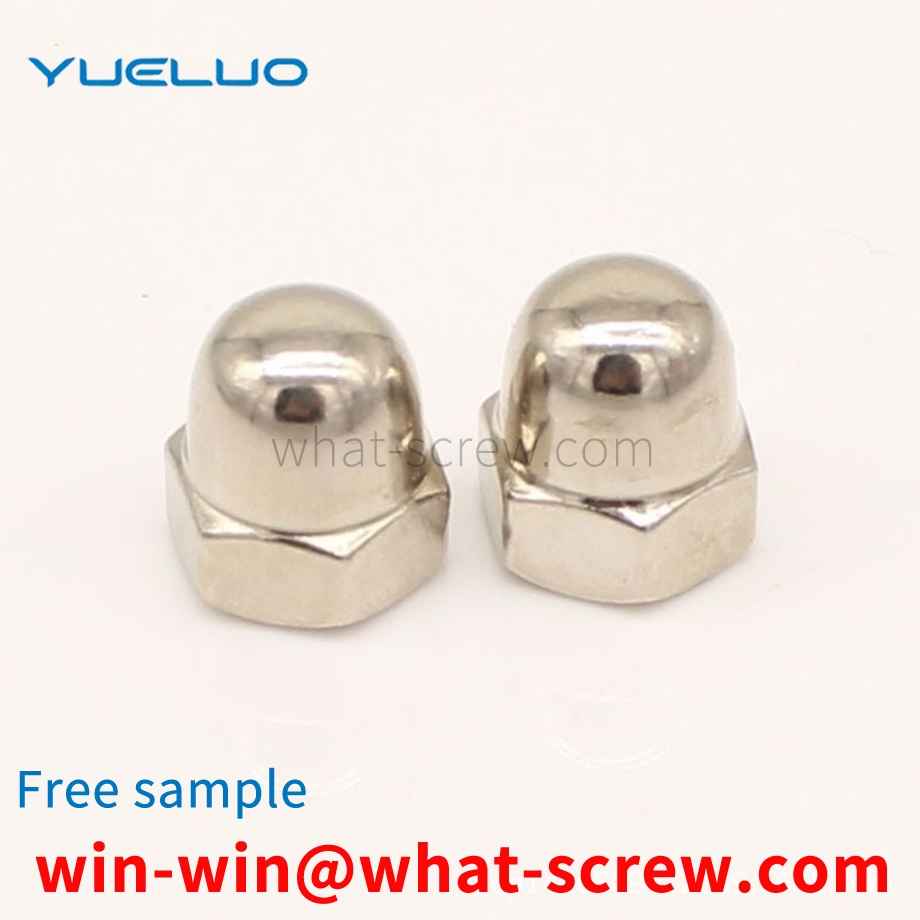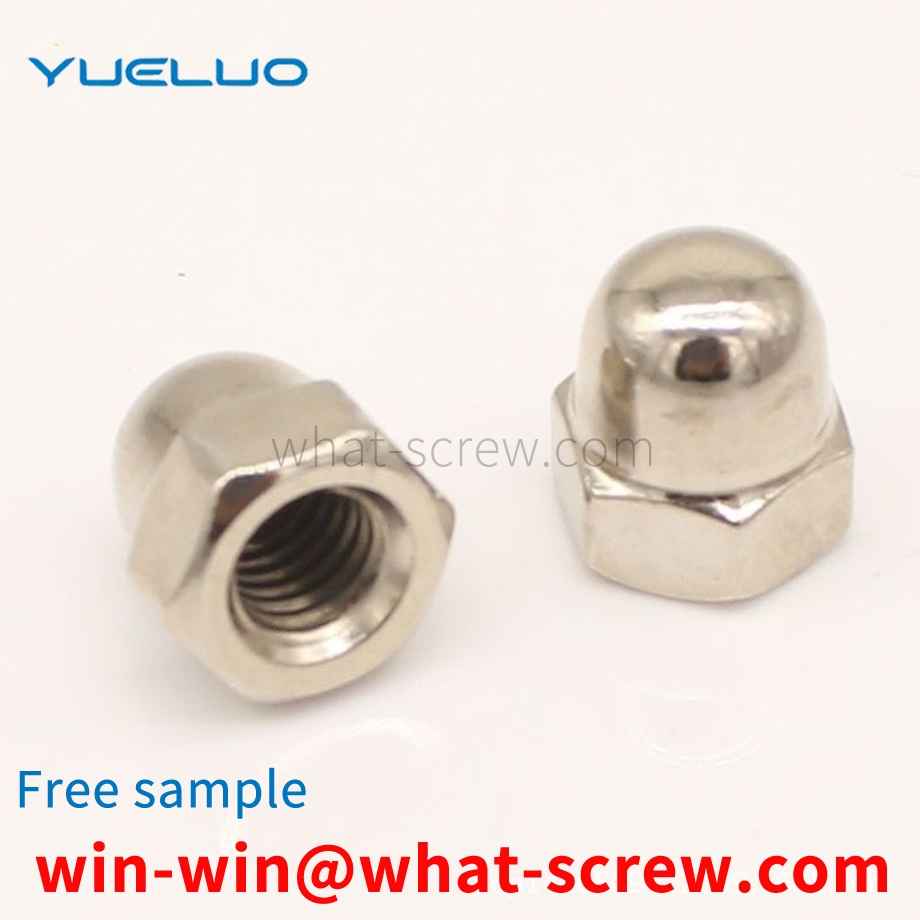Existing wood screws are composed of a threaded portion with a tapered angle and arranged along a tapered stem and a screw head. The head of the screw can be a countersunk head, hemispherical, or other shapes, and the head of the screw has a groove that fits with the tool, a word groove, and a concave cross groove. The taper angle of existing wood screws is either 45 degrees or 60 degrees, and the front end of the taper angle is a pointed point formed by a rotating thread. The existing wood screws have the following three deficiencies in use. Because the taper angle is 45 degrees or 60 degrees, and the thread angle is 71 degrees, the resistance when entering the material is relatively large, so the existing wood screws are manually screwed. It is difficult to screw in, especially when it is used for hardwood materials, and it often happens that the groove of the screw head is screwed out; A large lateral moment will be formed when the screw is screwed, which is prone to the problem of deviation from the position; in addition, because the existing screw is tapered, it will be subjected to both radial force and axial force when entering the material, and its stress state It is more complicated, so it is easy to cause the cracked wood material to burst, and even cause the material to have longitudinal cracks and be unusable.
Hydraulic wrench or pulling method Use hydraulic torque wrench or puller to fasten large screws, which saves effort and has high precision. However, hydraulic tools are expensive, screws of different sizes need to be equipped with different wrenches, and now the hydraulic pullers in the world are generally only M160×6. If the screws are too large, special specifications or very few in number, it is extremely uneconomical to equip them with hydraulic tightening tools.
The main purpose of the screw is to make the industrial product form a fixed one. In use, it often happens that the teeth cannot be closely attached, the screw head will be broken if the screw is locked too hard, or the tooth pattern is not properly locked, etc., and the use conditions are not met, all of which are quality. the problem of accuracy. Screws are mass products, not handmade works of art. In mass production, the purpose is to achieve high-precision and stable quality and popular prices to supply consumers. The accuracy of screws is usually 6g, and the rough screws used in construction projects are 10g. The value of screws is very important. In the world, there are examples of automobile factories going bankrupt because of poor screw quality; there are also examples of planes falling and vehicles being overturned because of poor screw quality.
NPT, PT, G are all pipe threads. NPT is the abbreviation of National (American) Pipe Thread, which belongs to the American standard 60-degree taper pipe thread, which is used in North America. National standards can be found in GB/T12716-1991 PT is the abbreviation of Pipe Thread, which is a 55-degree sealed conical pipe thread, which belongs to the Whitworth thread family and is mostly used in Europe and the Commonwealth of Nations. Commonly used in water and gas pipe industry, the taper is specified as 1:16. The national standard can be found in GB/T7306-2000 G is a 55 degree non-threaded sealing pipe thread, which belongs to the Whitworth thread family. Marked as G stands for cylindrical thread. National standards can be found in GB/T7307-2001 In addition, the 1/4, 1/2, 1/8 marks in the thread refer to the diameter of the pipe, and the unit is inches. People in the industry usually refer to thread size in points, 1 inch equals 8 points, 1/4 inch is 2 points, and so on. G seems to be the general name for pipe threads (Guan), and the division of 55 and 60 degrees is functional, commonly known as pipe circle. That is, the thread is machined from a cylindrical surface. ZG is commonly known as pipe cone, that is, the thread is made of a conical surface. The general water pipe joints are like this. Rc means conical internal thread ZG means taper pipe thread, 3/4 means inch mark, which is 3/4 inch conical pipe Thread, there is in the Hardware Manual. The national standard stipulates that the major diameter of ZG 3/4 thread is 26.44 mm. Please refer to Metric, American and British Thread Standard Manual (Third Edition). Its representation method should be: ZG 3 /4″. Among them (〃) is the representative symbol for inches. One inch is equal to 8 inches. The origin of 3/4 is 6/8=3/4. Commonly known as 6 points. Similarly, the major diameter of ZG 1/2″ thread≈21 mm. Commonly known as 4 points. ZG 1″ thread diameter ≈ 33 mm. Commonly known as 1 inch. ZG 1 1/2″ thread pipe outer diameter ≈ 48 mm. Commonly known as 1 inch and a half. Taper pipe thread is very similar to pipe thread, the difference is Only in the taper. Note that the basic size of the pipe thread and ordinary thread is different. DN is the nominal diameter
Other names of lock nut: root nut, locknut, nut. Purpose: To lock the outer joint of the through wire or other pipe fittings. The working principle of the nut is to use the friction between the nut and the bolt for self-locking. However, the reliability of this self-locking is reduced under dynamic loads. In some important occasions, we will take some anti-loosening measures to ensure the reliability of the nut locking. Among them, the use of lock nuts is one of the anti-loosening measures. There are also three types of lock nuts: The first is to use two identical nuts to screw on the same bolt, and add a tightening torque between the two nuts to make the bolt connection reliable. The second is a special anti-loosening nut, which needs to be used together with a kind of anti-loosening washer. The special lock nut is not a hexagonal nut, but a medium round nut. There are 3, 4, 6 or 8 notches on the circumference of the nut (depending on the size of the nut and the product series of the manufacturer). Several notches are both the focal point of the tightening tool and the snap-in of the lock washer bayonet. The third type is to drill through threaded holes from the outer surface of the nut to the inner thread surface (usually 2, which are distributed at 90 on the outer surface), which are used to screw in small-diameter countersunk head screws. The purpose is to give the thread Apply a centripetal force to prevent the locknut from loosening. The better quality lock nut sold on the market is inlaid with a small copper block that is consistent with the thread of the lock nut on the inner surface of the nut to prevent the radial jacking screw from directly contacting the locked thread and damaging the latter. . This kind of lock nut is gradually applied in the shaft end locking of rotating motion parts, such as the anti-looseness of the bearing at the mounting end of the ball screw. The second anti-loosening method is more reliable than the first, but the structure is relatively complex. Compared with the first two, the third clock has the characteristics of better anti-loosening effect, simpler and more beautiful structure and smaller axial size.
We have many years of experience in the production and sales of screws, nuts, flat washers, etc. The main products are: Hexagon nuts with covers, black plated 304 screws, heavy-duty thickened, 1/4 knurled nuts and other products, we can provide you with suitable products Your fastener solution.



















 Service Hotline
Service Hotline




